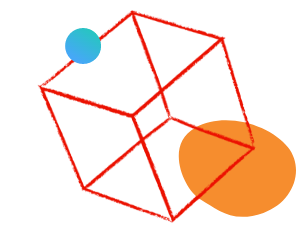Unique Visitor Segment
- Mark as New
- Follow
- Mute
- Subscribe to RSS Feed
- Permalink
- Report
How to create dashboard view on unique visitors only. Please help on the same.
When I tried creating segment by using unique visitor metric, I was unable find the unique visitor metric in components, as shown below:
I don't understand the reason behind the same. Please guide me.
Thanks!!
Solved! Go to Solution.
Topics help categorize Community content and increase your ability to discover relevant content.
Views
Replies
Total Likes

- Mark as New
- Follow
- Mute
- Subscribe to RSS Feed
- Permalink
- Report
Hi Bindu,
Since segment (and the sub containers) have scope (Hit, Visit or Visitor for AA / Event, Session or Person in CJA), there is no real need to have the Unique Visitor metric...
If you need to look at all data for a visitor that met a specific criteria then you can choose a visitor scoped segment. However, in many cases, you need to be careful, as a Visitor scoped segment may not be what you need... You may actually need the scope of a specific hit, or a specific sequence inside of a visit... then you would pair that smaller scoped segment with the Unique Visitor metric.
Let's look at some simple examples:
HIT [
Page equals home
]
This will return all the hits where the page name is home... paired with the page views metric this will return the total Home Page Hits, paired with Unique Visitor this will tell you the number of Unique Visitors that visited the home page within your date range.
VISIT [
Page equals home
]
This will return ALL hits from all visits that hit the home page at least once. When you pair this with Page Views, not only will you get the home page, you will get every other page contained in those visits... when paired with Unique Visitors, you should see the same number, as the inflated PVs wouldn't impact the number or users.
VISITOR [
Page equals home
]
This will return ALL hits, from All Visitors that hit the home page within your date range, including from Visits that they didn't hit the home page at all. While the UVs won't be inflated as such, IF you were to break this down by Day or Month, etc depending on your range, you will see UVs and Page Views on dates that the user didn't even go to your home page... (i.e. I came to your site on Feb 1, Feb 7 and Feb 13... I only saw the home page on Feb 7, but I will show up as a UV on all three days because within the month of Feb, I saw the home page).
I am working on articles to explain how scope works, but you might benefit from the more advanced article that I already wrote (the goes into more detail about containers, but touches on the scope concepts):
https://experienceleague.adobe.com/en/perspectives/the-magic-behind-the-curtain-complex-segments

- Mark as New
- Follow
- Mute
- Subscribe to RSS Feed
- Permalink
- Report
Hi @Bindu_Kumari1 ,
You should be able to create the view by using the UV metric directly in your report like below example,
Why do you need UV in segment builder? There is no scenario where you'll need to use UVs in a condition as segments already return the UVs (and their visits/hits) based on the segment rules you built. Visitor is the highest container for a segment and using UVs within rules won't return any set of user above this container.
Can you share more details on how you plan to use UVs in segment if it was available? What is the rule that you want to create? Based on that we can see what logic can be built/
Cheers!

- Mark as New
- Follow
- Mute
- Subscribe to RSS Feed
- Permalink
- Report
Hi Bindu,
Since segment (and the sub containers) have scope (Hit, Visit or Visitor for AA / Event, Session or Person in CJA), there is no real need to have the Unique Visitor metric...
If you need to look at all data for a visitor that met a specific criteria then you can choose a visitor scoped segment. However, in many cases, you need to be careful, as a Visitor scoped segment may not be what you need... You may actually need the scope of a specific hit, or a specific sequence inside of a visit... then you would pair that smaller scoped segment with the Unique Visitor metric.
Let's look at some simple examples:
HIT [
Page equals home
]
This will return all the hits where the page name is home... paired with the page views metric this will return the total Home Page Hits, paired with Unique Visitor this will tell you the number of Unique Visitors that visited the home page within your date range.
VISIT [
Page equals home
]
This will return ALL hits from all visits that hit the home page at least once. When you pair this with Page Views, not only will you get the home page, you will get every other page contained in those visits... when paired with Unique Visitors, you should see the same number, as the inflated PVs wouldn't impact the number or users.
VISITOR [
Page equals home
]
This will return ALL hits, from All Visitors that hit the home page within your date range, including from Visits that they didn't hit the home page at all. While the UVs won't be inflated as such, IF you were to break this down by Day or Month, etc depending on your range, you will see UVs and Page Views on dates that the user didn't even go to your home page... (i.e. I came to your site on Feb 1, Feb 7 and Feb 13... I only saw the home page on Feb 7, but I will show up as a UV on all three days because within the month of Feb, I saw the home page).
I am working on articles to explain how scope works, but you might benefit from the more advanced article that I already wrote (the goes into more detail about containers, but touches on the scope concepts):
https://experienceleague.adobe.com/en/perspectives/the-magic-behind-the-curtain-complex-segments

- Mark as New
- Follow
- Mute
- Subscribe to RSS Feed
- Permalink
- Report
Hi @Bindu_Kumari1,
Were you able to resolve this query with the help of the provided solutions, or do you still need further assistance? Please let us know. If any of the answers were helpful in moving you closer to a resolution, even partially, we encourage you to mark the one that helped the most as the 'Correct Reply.'
Thank you!
Sukrity Wadhwa

Views
Replies
Total Likes
Views
Likes
Replies
Views
Likes
Replies
Views
Likes
Replies





